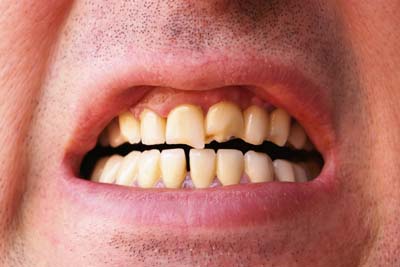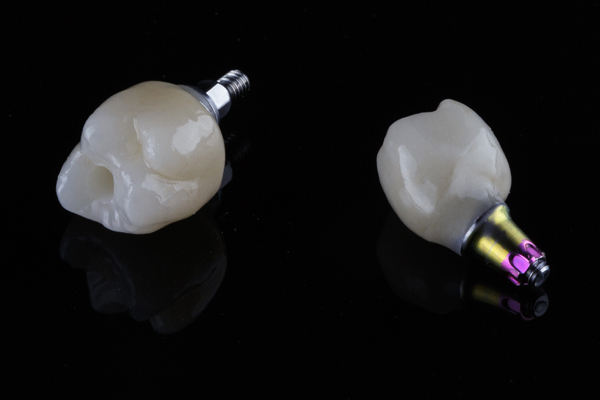A Dentist’s Recommendation on How to Treat a Broken Tooth

Individuals who have broken teeth may suffer from a lack of self-confidence. Whether you broke your tooth eating something hard or experienced trauma that directly or indirectly impacted the tooth, it is a good idea to get it fixed. Treating a broken tooth has not only aesthetic benefits but also provides dental and overall health advantages. A dentist can recommend treatment options based on various factors.
Benefits of fixing a broken tooth
An improved smile is one of the benefits of treating a fractured tooth, especially if it is a front one. However, there are other benefits. If the break is deep, bacteria will enter the tooth chamber, resulting in decay. Fixing the tooth right away stops this decay and prevents more serious problems.
A severe break may also allow bacteria to infiltrate the gums. Not only can this increase the chances of gum disease, but it may result in infection. Therefore, fixing a fractured tooth can prevent health issues such as osteomyelitis.
Treatment options
After conducting a dental exam and possibly taking X-rays, a dentist will recommend treatment options for a broken tooth. The procedures vary based on the tooth's location, the patient's goals, and the break's severity.
Veneers
Dental veneers are thin shells of porcelain, zirconia, or composite resin bonded to the front of the patient's tooth or teeth. They are an effective treatment option for chips caused by teeth grinding or poor chewing habits, remove stains from teeth that have been restored with fillings or crowns, or help blend the color of the patient's teeth to look more natural.
Veneers are made by taking impressions (molds) of the patient's teeth and sending them to a dental lab. The lab will use the molds to create custom-fitted veneers for the patient's teeth. The process takes approximately two weeks. Depending on the severity of the chip, the dentist may choose to only use veneers as the treatment option or in combination with other dental procedures.
Sealants
A dental sealant is a thin plastic coating applied to the chewing surface of each tooth. The sealants are highly durable and protect teeth from decay by sealing out food particles and plaque. Sealants can be used on both primary (baby) and permanent teeth. However, they are most often placed on the biting surfaces of back teeth. Sealants are not recommended for the front teeth because they can trap food particles between the sealant and the tooth, forming a cavity under the sealant that will not show up until later.
Sealants are often used with fluoride treatments to maximize their preventative benefits against decay. Fluoride treatments strengthen the enamel, making it more resistant to decay.
Filling
Dental fillings are one of the most common dental procedures and are an effective treatment option for a broken tooth, depending on its' severity. Dentists use fillings to treat various dental conditions, including cavities (tooth decay), discoloration, and cracked teeth. However, dentists mainly rely on fillings to repair tooth damage caused by decay.
In order to fix the damage, such as a small hole, the dentist will remove some of the tooth's surface area, ensuring there is enough room to place the filling material (porcelain, composite resin, or amalgam). To finish, the dentist will smooth the surface to ensure it blends with the patient's natural teeth and does not alter the bite.
Root canal therapy
The term root canal refers to the hollow center of the tooth. The treatment is also referred to as endodontics, which means inside of the tooth. The dentist may recommend a root canal if a tooth has been damaged by a chip or crack that allowed bacteria inside the tooth leading to the pulp infection. The pulp area is where the blood vessels, nerves, and connective tissues are located. Root canal therapy removes the infected pulp area and replaces it with a filling material that protects the patient's tooth from further infection.
Dental crowns
A crown may be a good choice if the break is more severe and involves most of the tooth. A dental crown restores the appearance and shape of the tooth because it covers the entire damaged portion. Not only does a crown blend in with the surrounding teeth, but it also protects the underlying nerves, which reduces sensitivity, and restores normal chewing function.
Dental implants
The dentist may recommend an implant or false tooth replacement if the break is severe enough that the tooth needs to be extracted. An implant looks like a natural tooth and provides stability and normal functionality. The dentist will surgically insert the implant into the jawbone, offering a foundation for the artificial tooth or teeth. Dental implants can also be used as an anchor for dentures worn for several years.
Implants can last a lifetime if properly cared for and maintained by the patient and our dental team.
Conclusion
A broken tooth can result in a variety of issues. Therefore, getting it fixed as quickly as possible is recommended to save the tooth and prevent possible irreversible dental consequences.
Request an appointment here: https://www.leedentistryoxford.com or call Lee Family and Cosmetic Dentistry at (662) 546-1143 for an appointment in our Oxford office.
Check out what others are saying about our dental services on Yelp: Restorative Dentistry in Oxford, MS.
Recent Posts
Restorative dentistry is the process of restoring damaged or missing teeth. You have had a form of dental restoration if you have ever had bridges, crowns, or fillings. Dentists want to improve or maintain your smile while preventing future dental complications. Restorative procedures need care and attention to detail. Therefore, only qualified dental professionals should…
What can a restorative dentist do for patients? This is a big question with a lengthy answer. However, in a nutshell, restorative dentistry may be a good fit for many people.Patients should consider if they have problems with their teeth or if their teeth feels loose, wobbly, or if they get cavities easily. Restorative dentistry…
The goal of restorative dentistry is to repair a smile that is damaged to achieve optimal oral health, appearance, and function. This review discusses restorative dentistry and highlights the various services that this branch of dentistry includes.Learning more about the benefits of restorative dental services can help you determine how a restorative dentistry visit can…
A restorative dentist is concerned with dental procedures that provide pain relief and the restoration of oral function in patients suffering from dental problems. Restorative dentistry treatments are becoming more popular due to their ability to mimic the natural look of your teeth. The goal is to restore normal functions and give you a smile…


